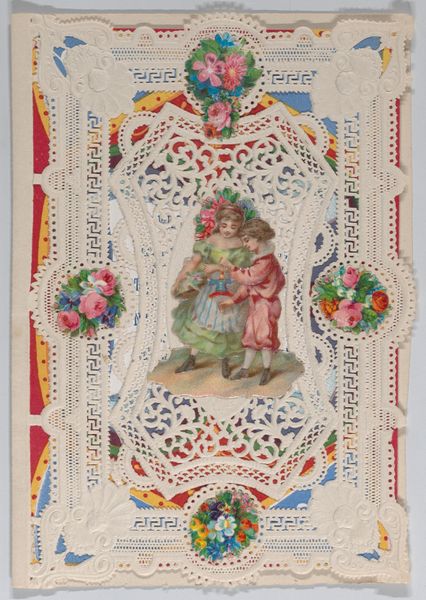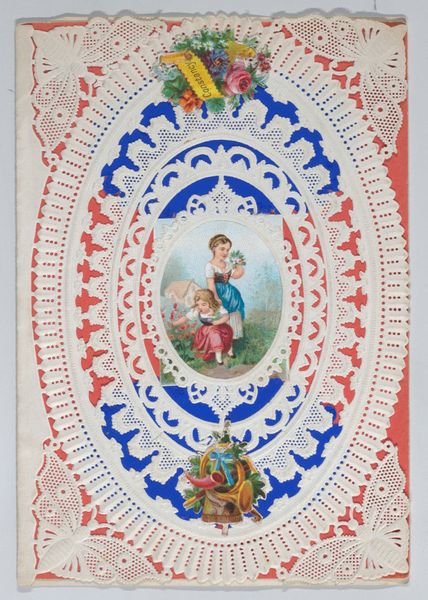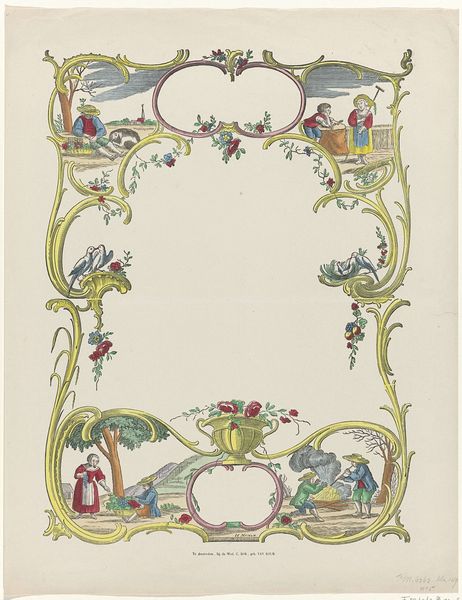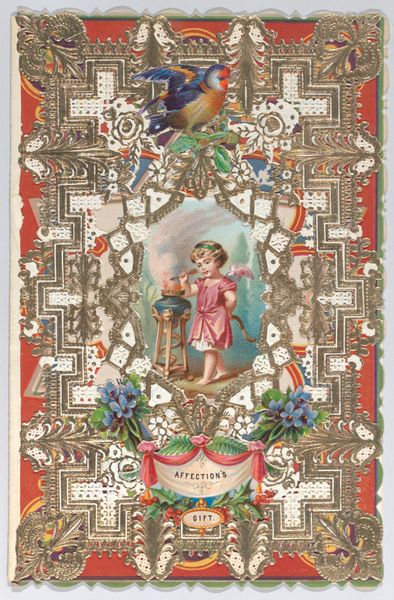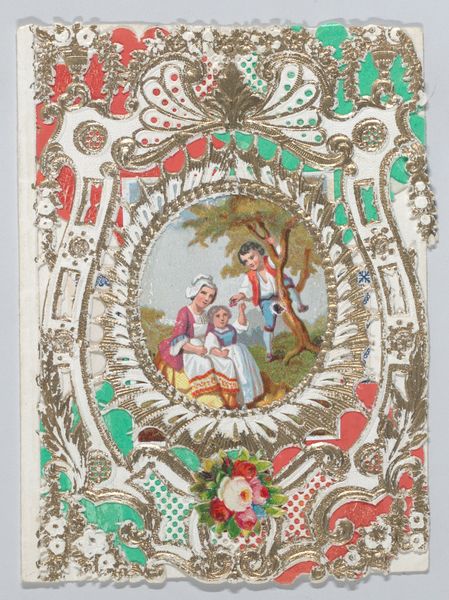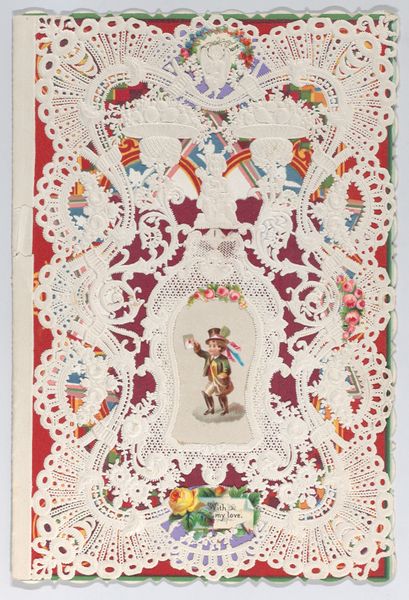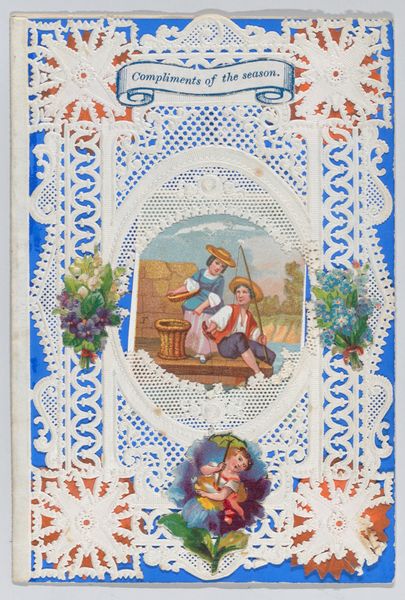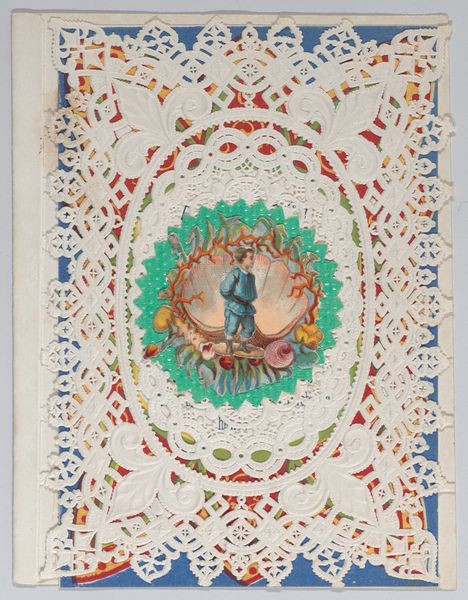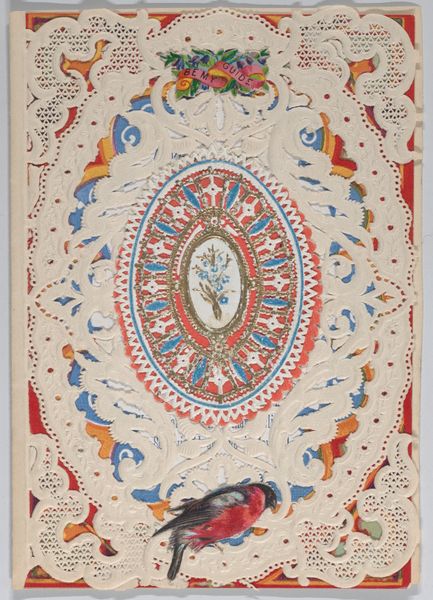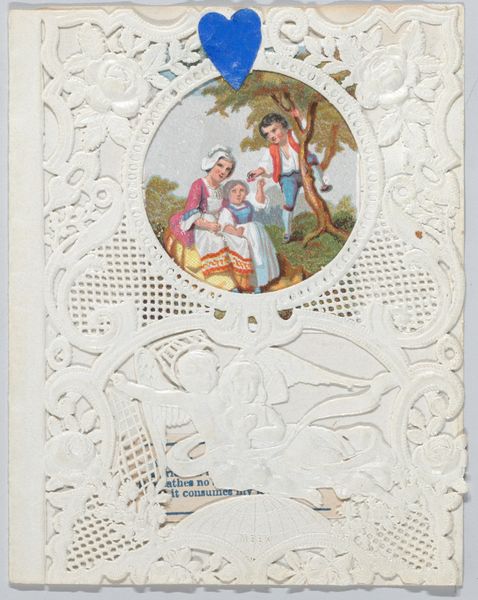
Dimensions: Width: 5 7/8 in. (15 cm) Length: 7 1/4 in. (18.4 cm)
Copyright: Public Domain
Curator: Let’s turn our attention to a piece from 1879, titled "Valentine," currently residing here at the Met. It's created from drawing, print and paper with watercolours. Editor: Well, it's a captivating object, isn't it? The intricate lace work, framing that idyllic central image… it feels intensely ornate, almost excessively so. Curator: Indeed. But let’s think about Valentine’s Day cards within the socio-economic context of the late 19th century. These intricate, often handmade, cards served as vital forms of communication. A physical, tangible expression of sentiments, and especially affection between classes. The level of detail became a symbol for how far one was willing to go to express the degree of affection and intention for relationship and social status. Editor: I'm interested in how the anonymous artist composes this miniature scene. Notice the central image – a boy and girl, in what appears to be an approximation of Eden, with lush greenery and balanced light – how it acts as a symbolic focus, inviting the viewer's gaze deeper. What do you make of the chromatic relationship of these two characters? The warm reds and cool blues – are these contrasts meant to symbolize opposing forces coming together? Curator: Undoubtedly, and one should not divorce such idyllic imagery from the economic realities and social conditions that these visual cards often served to obfuscate and bypass through fantasy. Genre painting, especially in miniature format, reinforced ideals of sentimental romance and innocence and yet romantic gestures have class implications depending on their recipients and the gifts attached. A painting within painting. Editor: Interesting, very interesting, and I would push back slightly because there's also a decorative, non-representational quality about this print too – the repeated patterns, for example, that draw the eye up and outwards towards these little decorative angel figures hovering and holding poses in between foliage. Do you feel there is a particular message being created there? Curator: Precisely! One might further read them as the physical manifestation of cupid which is further a complex signifier from across several cultural, sexual, and symbolic levels that go beyond what its aesthetics denote on a basic design appreciation scale. Editor: Food for thought, indeed. "Valentine" is an example that teaches you something new upon each re-examination of its structure. Curator: I find it continually opens up complex questions about social hierarchies through what its material composition actively sought to disguise.
Comments
No comments
Be the first to comment and join the conversation on the ultimate creative platform.
